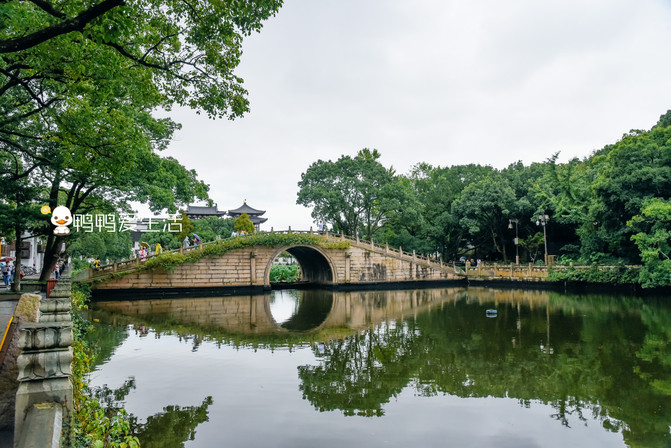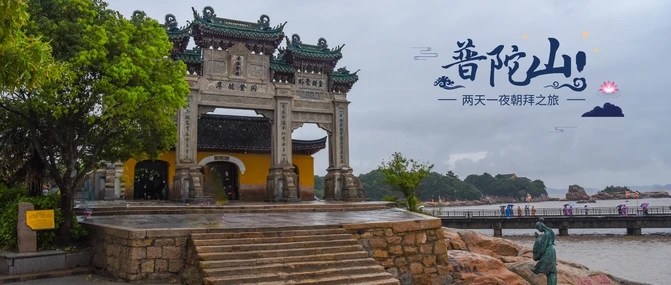
A Two – Day Pilgrimage to Putuo Mountain: Where Faith Meets Beauty
Introduction
Hey there, foreign friends! I’m excited to share with you my incredible two – day and one – night pilgrimage to Putuo Mountain. This sacred place holds a special position in the hearts of many Buddhists, especially those from southern Fujian. Whether you’re a devout believer or just a curious traveler, Putuo Mountain is definitely worth a visit.
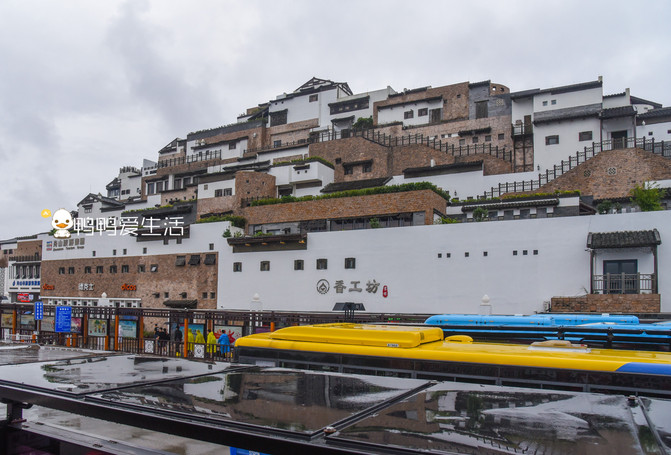
Before the Journey
External Transportation
If you’re coming from Xiamen, you have several options. You can take a high – speed train to Ningbo Station, which takes about 6 hours and costs 294 yuan for a one – way ticket. I chose to fly this time. A flight from Xiamen to Ningbo takes around 1.5 hours. There are also direct flights from Xiamen to Putuo Mountain, which is even more convenient. And guess what? This year, air tickets are quite affordable, so flying is a great choice.
Internal Transportation
From Ningbo Airport, you can take an airport bus directly to Zhujiajian Pier. It costs 70 yuan per person and the journey takes about 2 hours. If you want to go from Zhujiajian Pier to Ningbo Urban Area (South Station), you can first go to Zhoushan Putuo Center and then buy a ticket to Ningbo South Station. Buses leave every 15 minutes from there, while from Zhujiajian Pier, there’s only one bus per hour.
Transportation on Putuo Mountain
You can book the ferry ticket from Zhujiajian Pier to Putuo Mountain, the entrance ticket to Putuo Mountain, and the cable – car ticket in advance on the “Putuo Mountain” official WeChat account. Since September 18th, you must make an online reservation on the account before entering the island. On the island, you can mainly get around on foot, but there are also shuttle buses between major scenic spots. The bus fare ranges from 5 to 10 yuan, and you can pay by scanning the QR code behind the seat.
Tickets
The entrance ticket to Putuo Mountain is 160 yuan per person (140 yuan in the off – season). There are discounts for people with certain certificates. The one – way ferry ticket from Zhujiajian to Putuo Mountain is 30 yuan per person. You need to pay 5 yuan per person for the incense vouchers to enter Puji Temple, Huiji Temple, and Fayu Temple, and 6 yuan per person for the Purple Bamboo Grove and the Nanhai Guanyin Scenic Area. Note that the incense vouchers can only be paid in cash, so prepare some change in advance.
Clothing
It’s recommended to wear long trousers that cover your knees and avoid showing your shoulders when entering the temples (although there’s no written rule in Putuo Mountain). Also, wear comfortable shoes because you’ll do a lot of walking. In September, the temperature is around 20 degrees Celsius, which is quite pleasant. Unfortunately, I caught the tail of a typhoon and it rained during my trip. In case of rain, it’s better to wear a raincoat as it’s crowded in the temples and it’s not convenient to hold an umbrella.
Accommodation
There are many hotels and guesthouses on the island. You can choose according to your budget. Most guesthouses are concentrated on the side of the Western Sky Scenic Area. I stayed at “Putuo Yuan · Boutique Guesthouse” near Meicen Road and Financial Street. It cost about 200 yuan per night, and the boss even picked me up at the pier, which was very convenient.
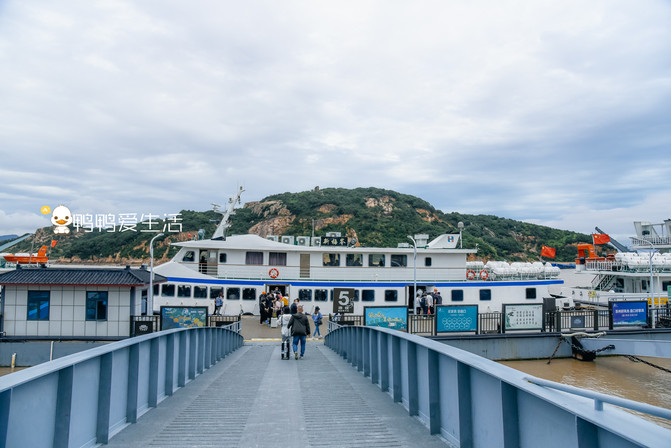
Itinerary
- Day 1 (September 18th): I took Flight MF8075 from Xiamen to Ningbo at 7:50. At 10:30, I took the airport bus to Zhujiajian Pier. I had lunch at Dicos at the pier when I arrived at 12:20. I checked into the guesthouse at about 14:00. Then I walked to Puji Temple at 15:00 and the Purple Bamboo Grove Scenic Area at 16:00. I returned to the guesthouse at 18:30 and had dinner at “A Jie’s Special Seafood Restaurant”.
- Day 2 (September 19th): I left the guesthouse at 8:00. I took a bus at Baibu Sand Parking Lot to Fayu Temple, then transferred to a shuttle bus to the cable – car station. I took the cable car up to Huiji Temple. I walked down along Xiangyun Road to Fayu Temple. Then I took a bus directly to the pier. The guesthouse boss helped me send my luggage to the pier, and I left the island at 12:30.
The Journey
Boarding the Ferry
Compared with my previous visits, the boarding process this time was much more convenient. The Zhujiajian Pier looks like the Potala Palace. There are many chain restaurants here, such as Dicos and Yonghe King, where you can grab a bite before going to the island. Now, you can book the ferry ticket and entrance ticket online and just scan your ID card to board the ferry. There are still a few manual ticket windows in the ticket hall for the elderly who are not familiar with online payment. There’s also a self – service map printer in the passage to the ticket office. You can scan the QR code to get a colorful hand – drawn map. On weekdays, you only need to wait in line for about 10 – 15 minutes to board the ferry, and the journey takes about 15 minutes. The ferries are big and stable.
Puji Temple: The Beginning of the Pilgrimage
I always start my pilgrimage in Putuo Mountain at Puji Temple. It’s the temple that closes the latest on the island. Also known as the Front Temple, it was built during the Yuanyou period of the Song Dynasty (1078 – 1085). It’s the largest temple on Putuo Mountain, and all the former abbots of the mountain lived here. The temple complex is huge, with the description of “a building every five steps and a pavilion every ten steps”. All the six halls of the temple are arranged on a central axis from south to north. It was pouring rain before I got on the ferry, but miraculously, the rain stopped after I boarded. This short – lived sunny spell was the most beautiful scenery of my trip.
It takes about 10 minutes to walk from the guesthouse to Puji Temple. In front of the temple, there’s a lotus pond called Haiyin Pond, also known as the Release Pond, which was built in the Ming Dynasty. Although the lotus – blooming season had passed, the lotus leaves were still lush, and I could still see a few buds, adding a touch of color to the gloomy weather.
There are three bridges over the pond. The eastern one is an arch bridge called Yongshou Bridge, built in 1586 during the Ming Dynasty and still in good use today. There are 40 lion sculptures on the stone railings of the bridge, each with a unique and vivid pose.
Yongshou Bridge leads to a screen wall with the words “Guanzizai Bodhisattva” written on it. The characters are five feet high and very powerful.
The middle bridge connects the main entrance of Puji Temple in the north and the Imperial Stele Pavilion in the south. There’s a pavilion in the middle of the bridge called the Octagonal Pavilion, facing the mountain gate of Puji Temple. The Imperial Stele Pavilion was built in 1731 during the Qing Dynasty. Inside, there’s a large white jade stele written by Emperor Yongzheng, recording the history of Putuo Mountain. The dragon – carved stele forehead is very lifelike, and the calligraphy is strong and vigorous. The stone carving is so exquisite that it’s truly a masterpiece, showing that Putuo Mountain has always been highly regarded by the royal family.
You need to buy an incense voucher for 5 yuan per person to enter Puji Temple, and only cash is accepted. In the era of online payment, this has stopped many tourists. But the good thing is that there’s no commercial atmosphere of selling incense and paper money in Putuo Mountain, and there are signs everywhere warning tourists to beware of fake monks. This makes the pilgrimage and sightseeing more pleasant.
Puji Temple has the main mountain gate (Imperial Stele Hall), the Heavenly King Hall, the Yuantong Hall, the Sutra Library, and the Abbot’s Hall along the central axis. There are also a bell tower, a drum tower, side halls, and guest rooms on both sides of the main halls. Even in the heavy rain, the temple was still full of pilgrims.
Different from the red – brick temples in southern Fujian, the buildings in Putuo Mountain are mostly painted in bright yellow, the color used by the emperors. There are ancient trees in the temple, and the sound of Buddhist chanting lingers, creating a peaceful and spiritual atmosphere.
Many first – time visitors to Puji Temple are confused because the main gate is always closed, and they have to enter through the side door. There’s an interesting story behind this. When Emperor Qianlong of the Qing Dynasty visited Putuo Mountain incognito, it was already late at night when he arrived. The mountain gate was closed, so he asked a young monk to tell the abbot that a “Mr. Wan” from the capital wanted to enter. The careless young monk forgot to mention “from the capital” when reporting to the abbot. The abbot said that the temple gate would not be opened unless the “Son of Heaven” came. The young monk didn’t wait to hear the whole sentence and just told Emperor Qianlong to enter through the side door. Angry, Emperor Qianlong issued an order after returning to the capital that the main gate should never be opened. Later, the abbot of Puji Temple pleaded with the emperor. Considering his own words, Emperor Qianlong made a compromise and said that the main gate could only be opened on the birthday of the Goddess of Mercy, which occurs once every 60 years. This tradition has continued to this day.
There’s a pagoda beside the lotus pond in Puji Temple called the Duobao Pagoda. Named after the “Pagoda of the Many – Treasures Buddha” in the Lotus Sutra, it’s the oldest building on Putuo Mountain that has remained in its original form. It, together with the Nine – Dragon Hall in Fayu Temple (the only remaining palace building from the Ming Dynasty’s Nanjing Forbidden City), the Yangzhi Guanyin Stele in Yangzhi Nunnery (carved according to the Guanyin painting by the famous Tang – Dynasty painter Yan Liben), and the rare Carpinus putoensis tree on Foding Mountain, are known as the “Four Treasures of Putuo”.
The pagoda courtyard is not open for visitors at present, so you can only admire it from the outside. It was built in 1334 during the Yuan Dynasty. The 32 – meter – high pagoda has five floors on four sides, with a platform but no eaves, and is entirely made of beautiful Taihu stones. On each of the upper three floors of the pagoda, there’s a carved ancient Buddha on each side. The Buddha statues are very beautiful, especially the statue of the Goddess of Mercy, with a gentle and solemn expression, making people feel kind and respectful. The background is a carving of the Eighteen Arhats, each with a different expression.
If you walk towards the parking lot from the Duobao Pagoda, you’ll see a low – key courtyard gate. This is probably the most low – key temple on Putuo Mountain, housing the Tianhua Chan Monastery and the Baizitang.
The Tianhua Chan Monastery was originally a quiet room called Qinglian Platform. It was built into a nunnery by the monk Fuzhen during the Xianfeng period of the Qing Dynasty. It was destroyed by a fire in 1899 and later rebuilt by his disciple Yuede, with more magnificent architecture. There are 82 halls in total, and the main hall, the Daxiong Baodian, houses statues of Sakyamuni, Manjusri, Samantabhadra, and the ten great disciples of the Buddha.
The Baizitang was opened to the public in recent years. When you enter, you can worship the main hall, the Dabeibao Hall, which houses the Thousand – Handed and Thousand – Eyed Avalokitesvara Bodhisattva and the Twenty – Eight Devas. Behind the main Buddha statue is the statue of Ksitigarbha Bodhisattva. There’s a “Baby – Giving Building” behind the main hall, but it’s usually not open to tourists. It’s said that the “Baby – Giving Guanyin” here is very effective.
There’s a bus stop at Baibu Sand near the Baizitang, from where you can take a bus to the Purple Bamboo Grove Scenic Area. But seeing the long queue, and the sign indicating that it’s only a 10 – minute walk, I decided to take a stroll along the seaside. The Baibu Sand looked very beautiful under the thick clouds.
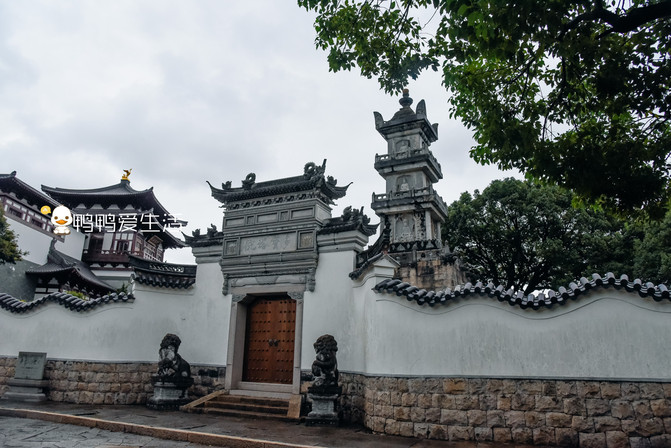
Purple Bamboo Grove Scenic Area: The Birthplace of Buddhism in Putuo Mountain
The Purple Bamboo Grove Scenic Area includes attractions such as the “Bukenqu Guanyin Temple”, the Chaoyin Cave, the Purple Bamboo Grove, the Guangming Pond, and the Nanhai Guanyin Statue. To the south, there’s the Guanyin Tiao, and you can see Luojia Island across the sea.
This is the birthplace of Buddhism in Putuo Mountain. According to historical records, in 916 during the Later Liang Dynasty, a Japanese monk named Huie brought a statue of the Goddess of Mercy from Wutai Mountain and was going back to Japan. But his ship was blocked on the sea near Putuo. He thought the Goddess didn’t want to go east, so he left the statue on the shore, and it was later worshipped by a local Zhang family. This is how the “Bukenqu Guanyin Temple” was established.
The Bukenqu Guanyin Temple is the oldest temple on Putuo Mountain. Although it’s not large, it’s an important place for tourists and pilgrims. It consists of three simple Buddhist halls surrounded by a yellow low – wall, with incense burning all year round. Next to it is the Chaoyin Cave.
The Chaoyin Cave is half – submerged in the sea, about 30 meters deep inside and 10 meters deep from the cliff to the bottom of the cave. There are strange rocks inside. The cave opening faces the sea, looking like an open mouth. The waves constantly hit the cave, making a sound like thunder, which is why it’s called the Chaoyin Cave. The words “Chaoyin Cave” were inscribed on the cave wall by Emperor Kangxi in 1699.
There are the words “Xian Shen Chu” (the place where the Goddess of Mercy appears) carved on the rock cliff. It’s said that the Goddess of Mercy has appeared here many times.
Next to the Bukenqu Guanyin Temple, there’s also the Western Pure Land Nunnery. The current Tianwang Hall and Daxiong Baodian were built by the master Miaoshan in recent years. There’s a “Guanyin Tiao Stone” in the temple. The west wing is the “Memorial Hall of Monk Huie”, which houses a statue of Monk Huie and bronze statues of the Goddess of Mercy from 33 sacred places in Japan.
The Purple Bamboo Grove is said to be the residence of the Goddess of Mercy. The plaque above the entrance, “Buta Zizhu”, was inscribed by Kang Youwei in 1919. The Purple Bamboo Grove Nunnery has been rebuilt five times in history, mainly during the Qing Dynasty, and the last reconstruction was presided over by the master Miaoshan after the reform and opening – up. The existing Buddhist buildings include the Tianwang Hall and the Daxiong Baodian. Its unique cultural relic is the purple bamboo stone, with clear patterns on it, looking like clusters of purple bamboo.
A must – visit place in the Purple Bamboo Grove Scenic Area is the Nanhai Guanyin Statue, which is in the same area as the Purple Bamboo Grove Nunnery. The statue is located on the Longwan Hillock on the New – Luo Reef, where Monk Huie left the “Bukenqu Guanyin” statue. This bronze statue of the Nanhai Guanyin has become one of the iconic buildings on Putuo Mountain. You need to buy an incense voucher for 6 yuan per person to enter, and only cash is accepted.
After walking through a purple bamboo grove, you’ll see the 33 – meter – high statue of the Goddess of Mercy standing on a high place, overlooking the world. The total height of the statue is 33 meters, with a 13 – meter – high pedestal, an 18 – meter – high bronze statue, and a 2 – meter – high lotus seat. It weighs more than 70 tons. The statue is made of imitation – gold copper by precision casting, consisting of 96 copper wall panels, and 6500 grams of gold was used for the Buddha’s face. No matter from which angle you look at the statue, it seems that the Goddess of Mercy is looking at you.
Under the overcast sky, the statue looks even more majestic. There were many pilgrims and tourists, and there were also many groups of pilgrims coming to worship. You can really feel the power of faith here.
From here, you can also see Luojia Island across the sea. It looks like a reclining Goddess of Mercy on the sea, so it’s also called the “Sleeping Buddha on the Sea”. It’s said that this is the place where the Goddess of Mercy practiced. After achieving enlightenment, she went to Putuo Mountain across the sea to establish a Dharma – preaching venue. This is the origin of the “Guanyin Tiao Stone” on Putuo Mountain. If you have time, I recommend visiting Luojia Island. Unfortunately, my schedule was too tight this time, so I’ll save it for the next trip.

Foding Mountain: A Pilgrimage in the Rain
I was lucky that the rain stopped on the first day, but it rained heavily all night and showed no sign of stopping the next morning. Well, I thought it was a test from the Buddha.
Foding Mountain is the highest point on Putuo Mountain, with its main peak called Baihua Peak, also known as Bodhisattva Peak, at an altitude of 291.3 meters. The Foding Mountain Scenic Area is a must – visit for



